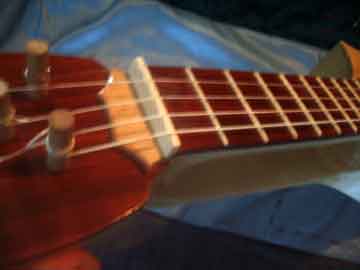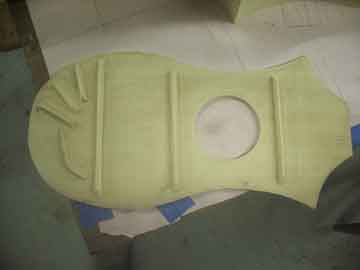
Here is the bottom of the tuning
head, recessed to help keep the pegs from being knocked out of
place. I like this feature in other instruments, and included it
on this one for no other reason than that. And it does a fine job.

The frets are square strips of bone glued into v-shaped grooves in the
fingerboard on edge. The fretting is modern - I had thought about
fretting it in 1/6 comma meantone, but decided that being able to play
among modern and medieval isntruments (a compromise) would suit my
requirements for this instrument better, so I fretted it to the rule of
17.817.
And for scale, my
ugly mug with the instrument. It is not the lightest, brightest
sound, but neither is it deep and dull. It is tuned to D, a, e,
b', f#'. Although I know that most citole illustrations show 3 or
4 courses, I am experimenting with the stringing and tuning for a
cittern I am planning, and decided to use this instrument as a test bed
for that one.











